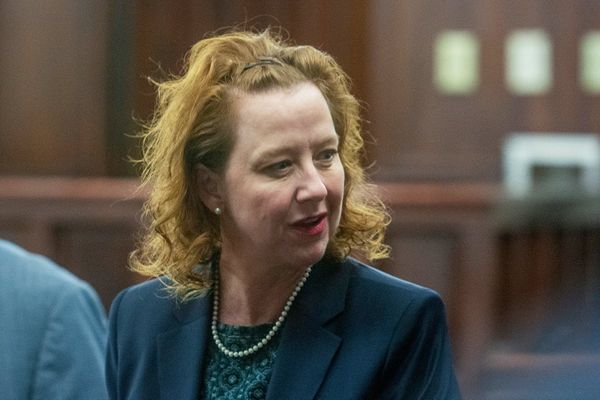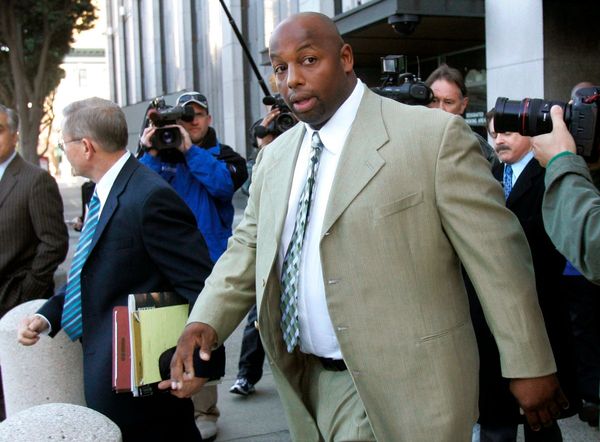
The Australian government’s Multicultural Framework Review report was released last Wednesday, prompting questions about how far the government is prepared to go in implementing its 29 recommendations. One key recommendation is to “establish a Multicultural Affairs Commission and commissioner, and standalone Department of Multicultural Affairs, Immigration and Citizenship, with a dedicated minister”.
The reason provided in the report for the recommended change seems compelling:
As a result of the Multicultural Affairs portfolio being positioned on such a micro scale within the Department of Home Affairs, there has been an inability by the multicultural affairs portfolio to influence public policy and government decisions. And the focus of policy and program approaches to culturally and racially marginalised communities has become one of being monitored and managed [emphasis added] rather than inclusive and celebratory. It became increasingly clear to the panel that strategic policy direction to realise the social and economic benefits of multiculturalism for Australia has been consistently overshadowed by a singular security focus, mainly on border security, foreign interference, and countering violent extremism.
Indeed, Home Affairs and Multicultural Affairs clearly do not belong together. This may not be an accurate analogy, but it is tempting to see Home Affairs as the battlefield, and Multicultural Affairs as the field hospital. The outgoing minister for home affairs Clare O’Neil was responsible for national security, counter-terrorism, foreign interference, cybersecurity and border security, not to mention Andrew Giles’ portfolio of Immigration, Citizenship and Multicultural Affairs. And, as if this broad sweep of concerns wasn’t already enough, international relations scholars will tell you that national security policy and its rhetoric actually involves an even wider “coalition of securitisers”: ministries, government agencies, political elites as well as the media.
Despite the replacement of O’Neil with Tony Burke as home affairs minister in Sunday’s reshuffle, the problem identified in the report remains. In fact, the elimination of Giles’ ministry seems to have further diminished the importance of multiculturalism.
In contrast, the Multicultural Affairs portfolio often involves attending to the grievances of Australia’s ethnic communities about such matters as distrust, exclusion and marginalisation. And some of these grievances may actually have been engendered by people with a “surveillance and punishment worldview” within Home Affairs itself, in their earnest — perhaps even zealous — efforts to monitor and manage those communities.
Whether Multicultural Affairs should become a “standalone” ministry is open to debate; Bob Carr, for one, believes this would just create more bureaucracy. But unless security and multiculturalism are somehow put on an equal footing, without the agendas of the former subsuming and hijacking those of the latter, there can hardly be an effective pathway towards social cohesion.
But proposed organisational changes aside, Australia’s multiculturalism needs to be redesigned in the context of current geopolitics and Australia’s positions on various issues. Specifically, Australia’s foreign policies and initiatives in relation to China, Russia, Ukraine, Israel and Palestine have a crucial role in the well-being of diaspora communities who have cultural, historical or familial connections with these countries and regions. Yet one gets the feeling that the review may as well have been conducted in the 1980s, before fears of a China threat, the Russian-Ukraine war, and the Israel-Palestine conflict in Gaza had come to dominate the Australian public’s imagination.
But the problem — and this is not directly addressed in the review — is that our national security strategies vis-à-vis the Chinese threat, Russian interference and counter-terrorism are largely shaped by a geopolitical imagination dominated by a set of us-versus-them binarisms. As Geoff Raby puts it: “Russia is evil, China is bad, India is good, and the US is the sturdy reliable groundsman protecting us from the prowling wolves.” The fallout from this geopolitical mapping has been a closer scrutiny of some diaspora communities as possible agents of influence and interference — and even as potential spies — on behalf of foreign forces, leading to distrust and alienation of some people in these communities.
It’s all well and good to make motherhood statements such as “despite the events in the world, we are a multicultural country and we all need to get along” or “we only criticise the CCP government of China, not the wider Chinese community”. But for diaspora communities whose countries of origin are caught up in international “troubling events” (as the report puts it obliquely), whether or not they feel included in Australia has a lot to do with whether their country of origin happens to be “evil”, “bad”, “good” or “reliable”, and whether the Australian government and mainstream rhetoric decide to support or oppose their country of origin. The domestic implications of our foreign policy have not been properly recognised, let alone addressed.
Not to recognise the connection and tension between Australia’ security strategies in the new geopolitical dynamics and Australia’s goal of social cohesion is either politically disingenuous or naïve. Writing in the context of the potential adverse impact of Australia’s China policy, Osmond Chiu cautions that pursuing our foreign policy through a defence and security lens needs to stop fuelling “the perception that Chinese Australians would be acceptable collateral damage in a conflict”.
Chiu’s fear is supported by a study showing that the general public’s attitudes towards Chinese diaspora communities are directly correlated with how the nation of China is reported in the media. A common assumption held by many of our politicians is that anti-Chinese racism or anti-Asian racism only arose during, and was specific to, the COVID period. But as a recently released 2024 ACRI/BIDA poll again confirms, a deep sense of distrust and suspicion of Chinese Australians has persevered and is showing no signs of waning. Consistent with previous years, 43% of Australians think that Australians of Chinese origin can be influenced by the Chinese government to undermine Australia’s interests and social cohesion.
My own survey and interviews with Chinese Australians also suggests that the media plays a big role in monitoring and managing Chinese Australians, often to a detrimental effect. One of the interviewees in my study was Jimmy Li, the chair of the Chinese Community Council of Australia, Victoria chapter (CCCAV). Li mentioned a story in the Daily Mail from March 6, 2023 alleging that three Chinese men taking photos at a Victorian air show had “aroused [the] suspicions” of a security expert. The Daily Mail withdrew the report the next day without explanation. To Li, the report seemed unfair, speculative, and suggestive of Sinophobia:
“Phrases like ‘Chinese spy’ or ‘Chinese threat’ used in the media can make others and society treat us differently, even trigger racism … It can affect everyone in the Chinese community.”
While the panel has recommended a structural change of departments, it has not presented us with a roadmap — either conceptually or practically — to navigate the ongoing tension between Australia’s national security agenda and its policy of multiculturalism. Rather than falling back on a generic and generalised critique of racism, prejudice and discrimination, a more adequate multicultural framework needs to conceptually address a xenophobic mindset, constituted by an entire array of tropes such as Islamophobia, antisemitism and Sinophobia.







